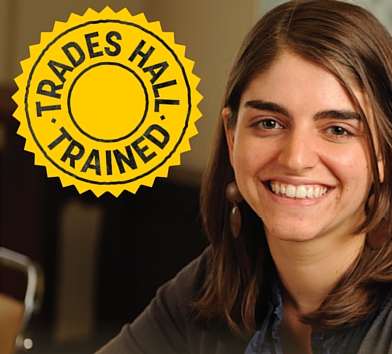Forklifts are a serious hazard: each year approximately 400 people are injured by forklifts at Victorian workplaces - and since 1985, more than 55 Victorian workers have lost their lives in incidents involving forklifts. All are avoidable.
Forklifts must be in good working order and properly maintained.
Completing a forklift safety checklist should be part of every forklift operator's daily routine. Before starting a shift, all operators should check their forklift is in safe working order, ready to be used and capable of completing the tasks required of it.
If any damage or problems with a forklift are identified, they should be immediately tagged and reported to a supervisor - if it is unsafe to operate the forklift with the problem, then it should not be operated. WorkSafe publication Forklift Safety - Reducing the Risks has a sample checklist to follow.
Do I need a licence to operate a forklift?
The short answer is "yes" - it is necessary to hold a licence to operate a forklift. [Note: a licence is not required to operate a 'pedestrian forklift', that is, a forklift where the operator is walking and 'pushes' the forklift or, in the 2017 regulations, if the forklift is a 'low-lift pallet truck' or if its fork arms or other loadholding attachments do not go above 900mm].
However, if you are "in training" you are permitted to operate a forklift without a licence until such time as you are competent enough to be assessed. You must be within sight and sound of a licensed operator at all times. It is not sufficient that there is a licensed operator SOMEWHERE on the premises.
For someone to be considered to be "in training", they should be undergoing and currently enrolled in a training course - it is not acceptable for a person to be "in training" indefinitely.
WorkSafe Victoria has instituted a 'zero tolerance' policy on the unsafe or illegal use of forklift trucks, dramatically increasing the risk of prosecution for those who cause or tolerate non-compliance with health and safety laws.
This means that any immediate risk or other non-compliance with OHS law associated with the use of forklifts detected by a WorkSafe inspector is expected to be rectified not only in relation to the particular incident but to prevent similar incidents occurring in the future.
What about driving on the road?
If a forklift has to be driven outside the workplace on a public road, it must be registered and have number plates. In addition to holding a current forklift licence, the operator must also hold a current Victorian driver's licence.
More information:
WorkSafe has produced a forklift safety information pack to assist employers to prevent forklift incidents in the workplace. It focuses on improving forklift traffic management. The pack is FREE and is available by emailing [email protected] or telephoning 1800 136 089.
It can also be downloaded. More information from WorkSafe
- Powered mobile plant
- Forklift Safety - Reducing the Risk - includes forklift Instability and pedestrian safety
- Forklifts: Developing a Traffic Management Plan - a WorkSafe Health and Safety Solution
- A Guidebook of Industrial Traffic Management and Forklift Safety developed by the Monash University Accident Research Centre (MUARC) for WorkSafe Victoria to provide specific guidance on workplace traffic management and forklift safety.
- Purchasing or hiring a safe and efficient forklift (Industrial Lift truck) - a two page leaflet with ergonomic advice included
Check WorkSafe's Forklift topic page for additional resources.
Resources from elsewhere:
- From SafeWorkNSW:
- From WorkSafe in British Colombia (Canada), a leaflet Safe Operation of Lift Trucks [pdf]
Last amended April 2019
